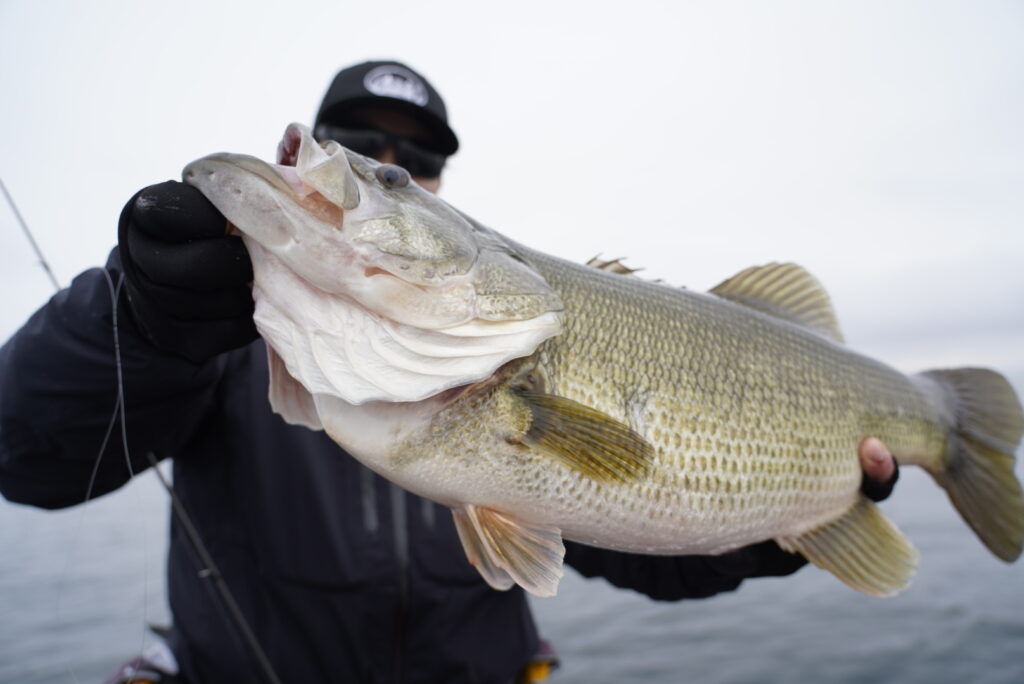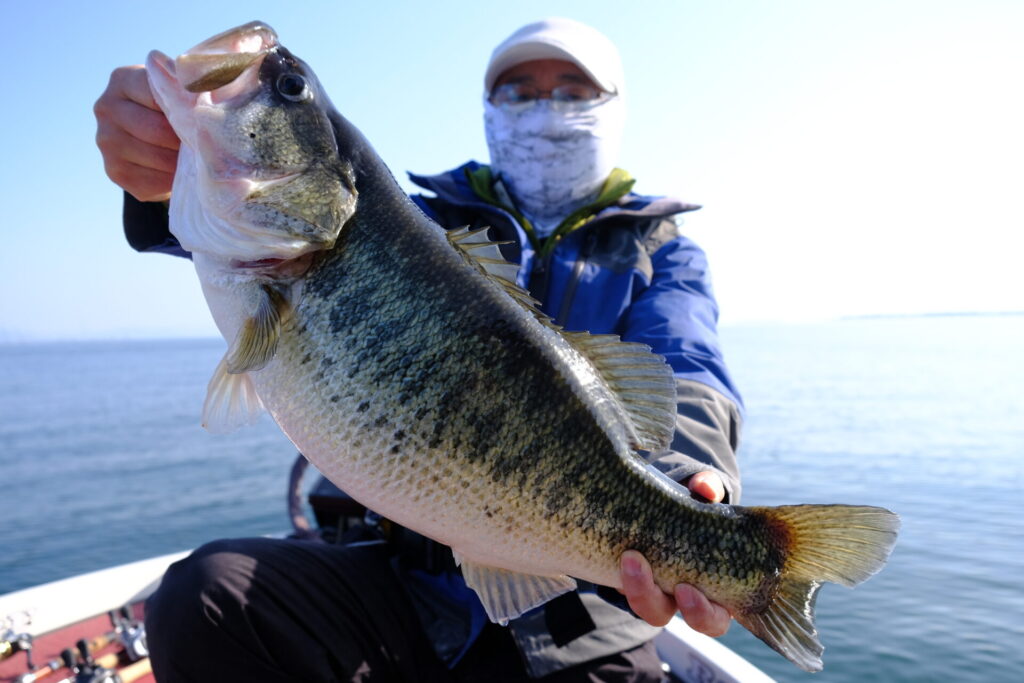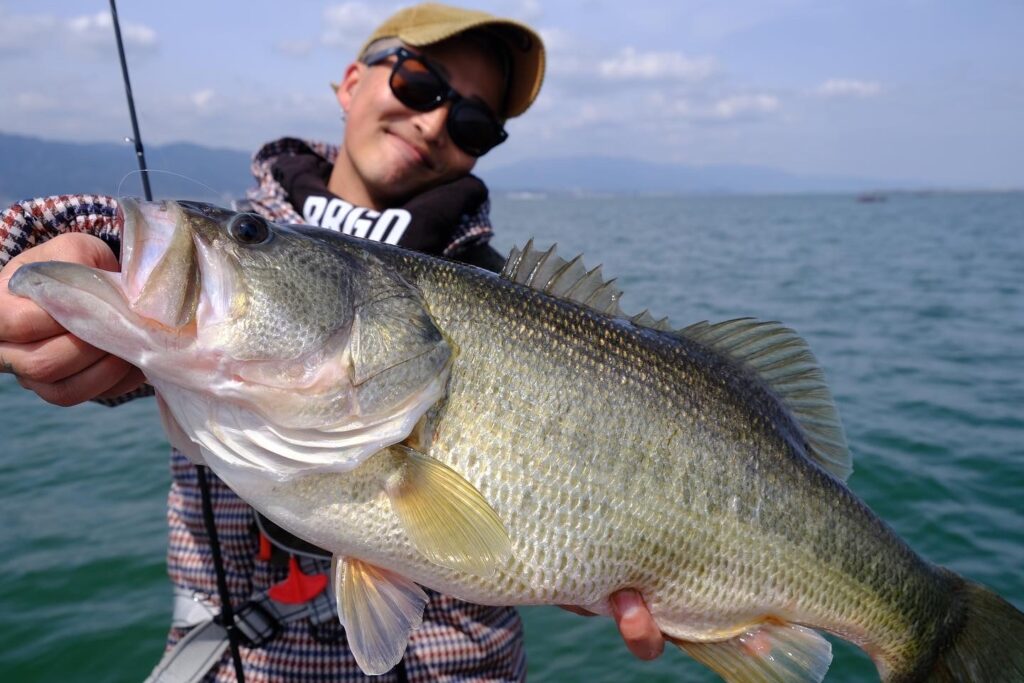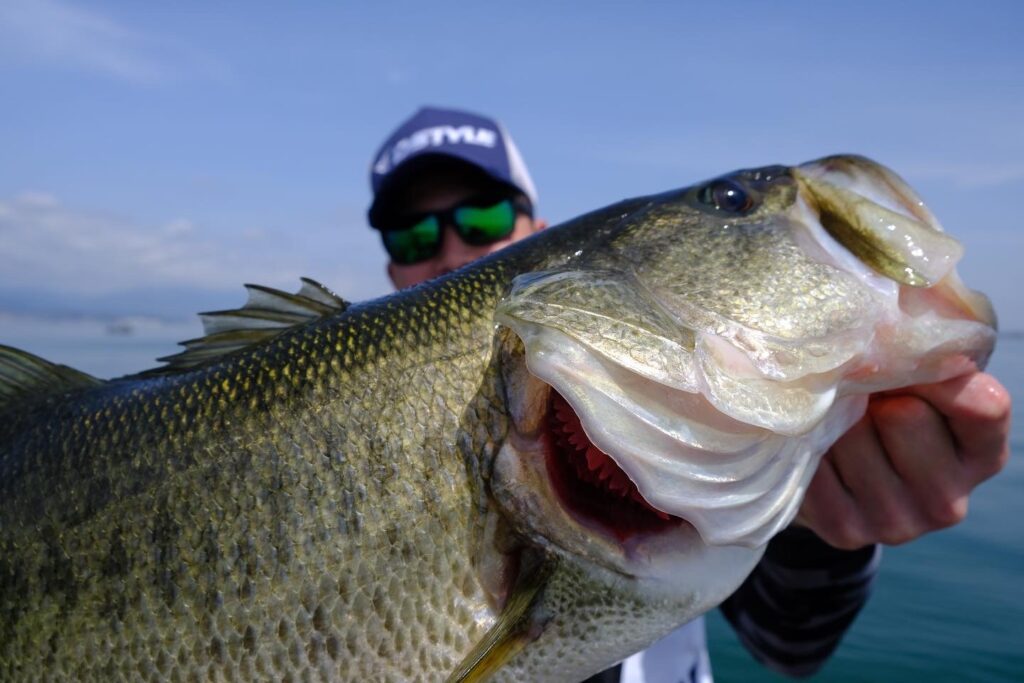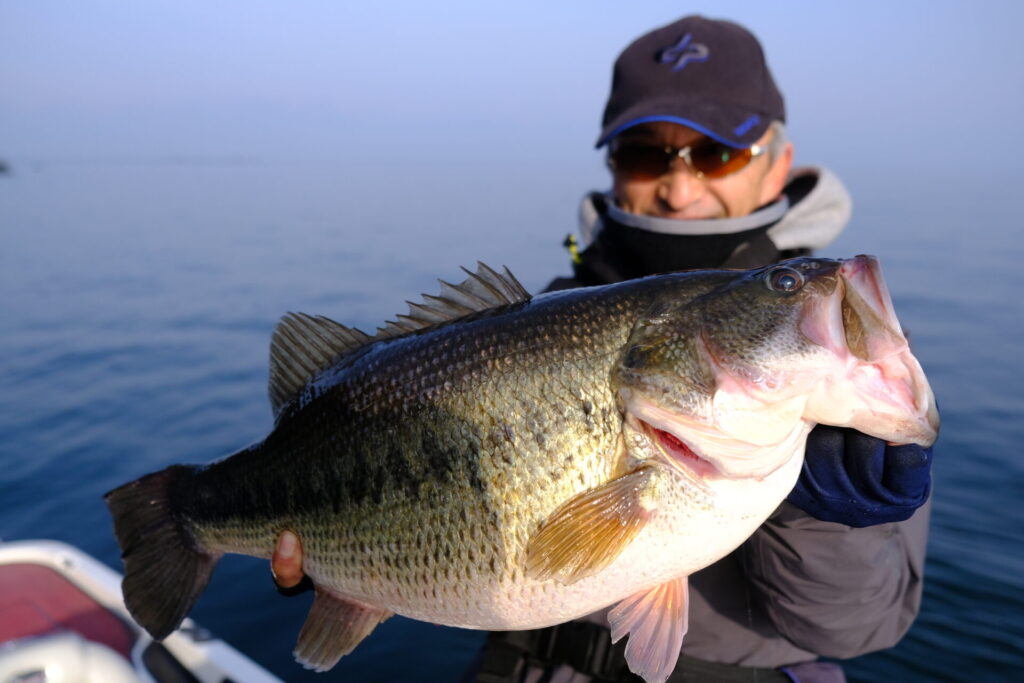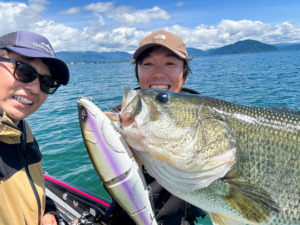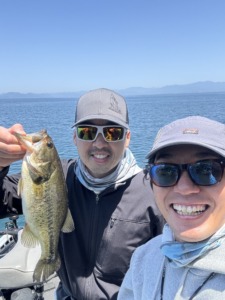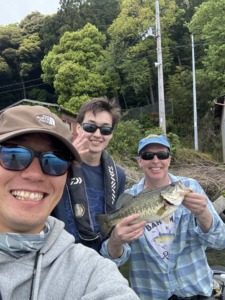Hello everyone. I am Atsuya Asano of CONNECT, a bass fishing guide on Lake Biwa.
Sakamata shad jig head fishing has opportunities to be active in various lakes throughout the year.
I sometimes get questions about tackle and fishing methods for this fishing, so I will try to write a blog post about it.
Sakamata Shad 5″ & 6″

Sakamata Shad 5-inch (deps) and Horizon Head LG+G (Gamakatsu)
You can buy them from this link
Everyone loves the Sakamata Shad (deps).
It is available in 4″, 5″, 6″, 7″, and 8″ sizes, and I use the 4″ to 6″ size and normal weight models for mid-strolling.
Heavy-weight models are almost never used because the entire rig will have a low center of gravity and will not produce a clean roll action.
Until recently, this lure was rather hard to find, but now it is relatively easy to find if you don’t choose the right color.
(Even so, popular colors often sell out in an instant…)
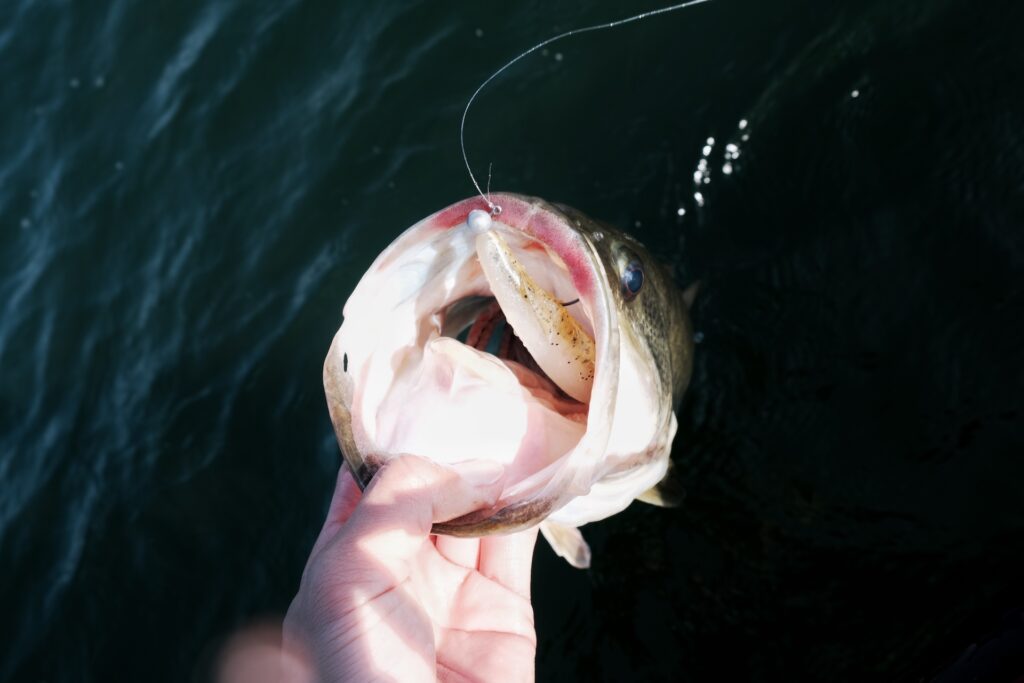
How to catch fish by mid-strolling Sakamata shad
There are two basic prerequisites for this type of fishing: going where the fish are.
One is action and the other is tackle setting.
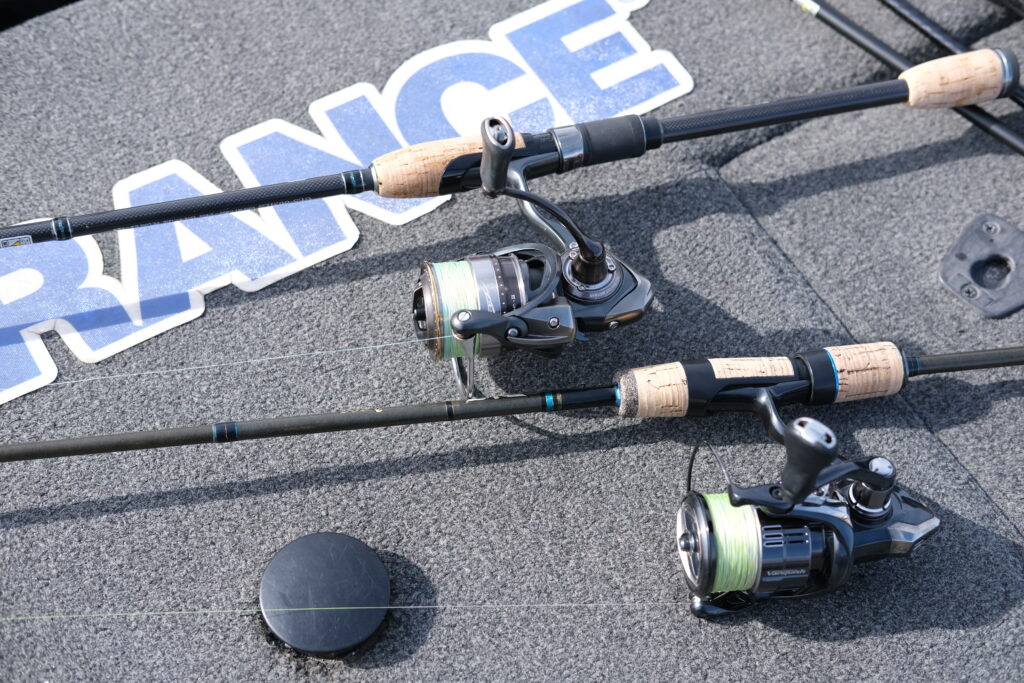
Tips1: Aiming points and actions
I tend to use it around obstacles.
Grass areas, brush piles, wrecks, fish reefs, rock zones, etc.
- First, cast beyond the obstacle you are aiming for, count down to the bottom, and fall.
If there is a lake current, there is no need to make the line fall extremely slack. Fall with a tension that is not too tight, but not too loose. - Once Sakamata Shad lands on the bottom, start shaking the reel as you reel in.
By shaking as if tapping the line, the Sakamata Shad in the water will roll and create a flickering effect.
If you have difficulty shaking while reeling, you can just shake first. It is like reeling in the loose line after shaking. - Pull back a little and you should contact the obstacle you are aiming for.
When you make contact, do not change the movement of the rod at all, but continue pulling while feeling the obstacle. - Eventually, it will slip through the obstacles and come back to you, so pull it tight to your feet.
There are three timing points when a bite is released.
・The first moment of contact with the obstacle
・During contact with the obstacle
・After slipping through the obstacle
Tips2: Tackle setting
Please read more about tackle settings on a separate page.
color selection
One of the most common problems people have is color selection.
I use three different colors depending on the type of baitfish being preyed upon at the time and the color of the water.
However, color selection is not a high priority in bass fishing, so I believe it is best to use colors that you think will catch fish.
Recommended color 1:Champagne Pepper Neon Pearl
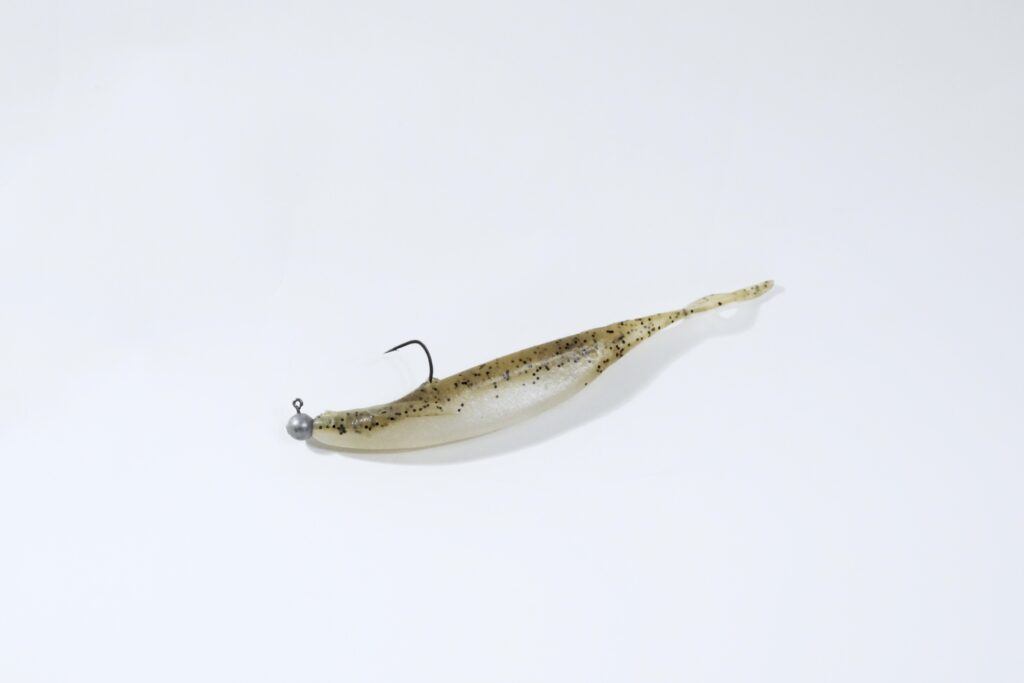

It is a popular color that I do not need to explain.
Especially in Lake Biwa now, Moroko are the main bait at many times, so it comes into play a lot.
It is a pearl-based color with aurora borealis lame and can be used in a wide range of water qualities from clear to slightly muddy.
Recommended color 2:Golden Shiner

When the water is a little muddy or when I want to make it more appealing in low light, I use Golden Shiner, which has a more distinct flickering effect.
I like this color because it looks flashy at first glance, but it is surprisingly transparent and natural, and I use it a lot as well as Champagne Pepper Neon Pearl.
Basically, I mainly use the above two colors, but I also use #96 Wakasagi when I think the fish might not like the lame.
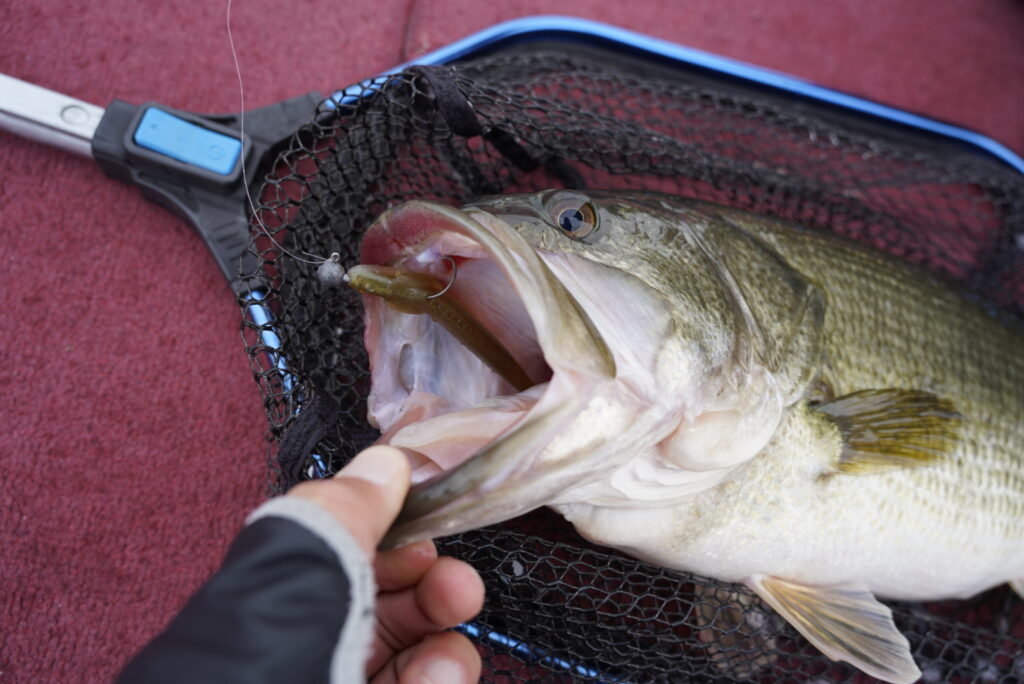
The jig head to use with this lure: Horizon Head LG (Gamakatsu)
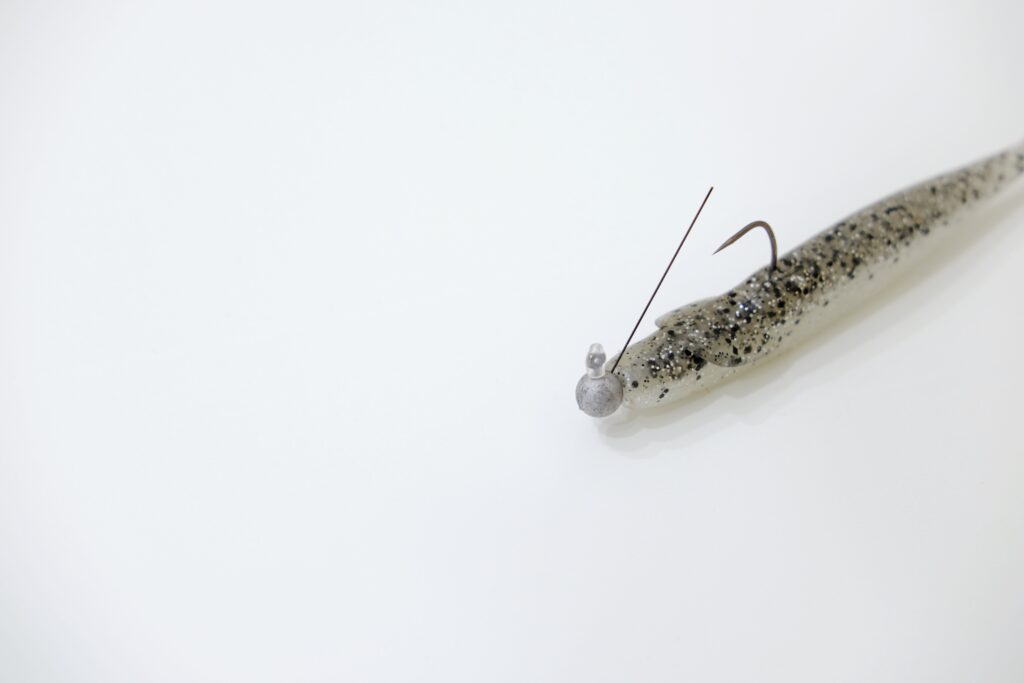
I had a lot of trouble with jig heads until I got this Horizon Head LG.
There were times when the tackle balance was not right, or the hook was stretched or hook off.
However, since I started using the Horizon Head LG, the hooking has improved tremendously.
The weight lineup includes 3.5g, 4.4g, 5.2g, and 6.2g.
Hook sizes are #1/0, #2/0, and #3/0.
A single monoguard dramatically improves the ability to slip through obstacles.
It is less likely to get caught in complex brush piles and fishing reefs.
Advantages of not stacking
Getting stuck means that there is a lot of pressure on the spot.
It is important to make the fish react honestly without putting pressure on the spot.
Stuck hooks tend to spoil the tip of the hook and damage the line, which can lead to tragedy after the fish bites.
Therefore, around complicated obstacles, a jig head with a guard is inevitably the choice.

We use 3.5g as the basic weight for both sizes.
Up to about 6 meters, we use 3.5g.
In slightly deeper water or when there is wind, we sometimes use 4.4g to 5.2g.
Mid-strolling recommended rod ACES66SLJ Mid Strolling Special (Fenwick) +19 Vanquish 2500S
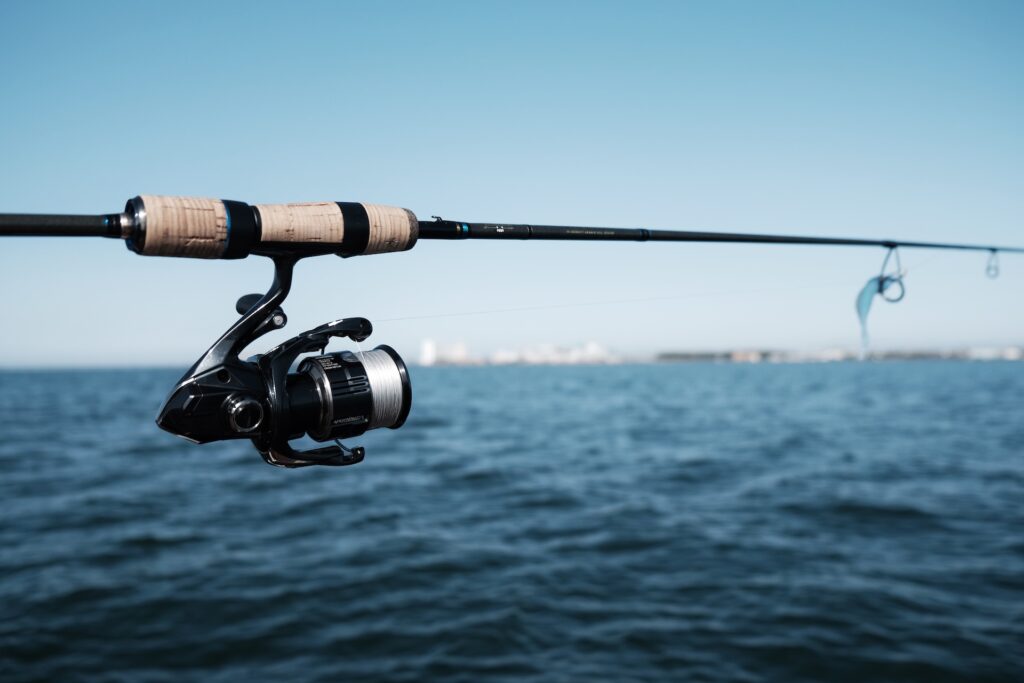
I use Fenwick rods when it comes to mid-storolling.
The ACES series in particular are very light, and when combined with the 19 Vanquish, can keep good action going all day long.
The 19 Vanquish 2500S weighs 165g and the ACES66SLJ weighs less than 100g, so the total weight is 265g, a very light tackle setup.
For more details, please see the above article for an imprementation!
I will write an imprement article on 19 Vanquish later, so please look again!
Braided line recommendation for Mid-storolling: Seaguar R18 Kanzen Seabass (Stealth Gray) (Kureha)

The Braided line + fluorocarbon leader setting is best for fishing this Sakamata Shad jig head.
The Braided line + fluorocarbon leader setting produces a tight rolling action when the Sakamata Shad is used with a jig head.
The low stretch of Braided line contributes to the good action.
Advantages of using Braided line
1、Provides greater casting distance.
Compared to fluorocarbon line of the same strength, Braided line is made by weaving the fibers in different directions, making it stronger and thinner.
As a result, greater casting distance can be expected.
With the Sakamata Shad jig head, the action is to swim laterally, so the ability to pull a long distance is a significant advantage.
2、 better aciton
The Braided line has no elasticity. Therefore, rod action is directly transmitted to the lure.
Especially in deep water or when casting long distances, transmitting power and creating precise action directly affects fishing results.
3、Easy to hook set
This is a bit similar to the previous item, but PE line is not elastic, so there is little loss of power given to the line.
When you hook a fish at a distance, it is a big advantage to be able to hook the fish’s mouth even with spinning tackle.
Summary
These are my personal recommendations for tackle settings.
I hope you will find one of them useful.
The jig head rig is something that can be used throughout all seasons, so please try it out and learn it!
You can catch big ones!
